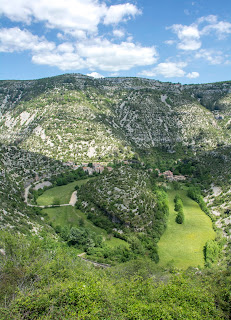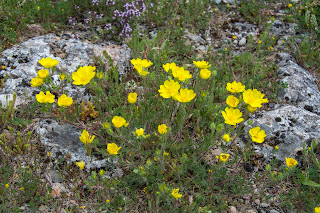Cirque de Navacelles
Ever since our first brief visit in 1986 I have wanted to re visit this amazing geological wonder. On our recent visit to France we got the chance to at last make our long overdue return.
On the southern edge of The Cevennes, The Cirque de Navacelles is a large erosional landform with an incised meander. It is in the Departement Gard, very close to the boundary with Herault. From the plateau at the top, to the small village down in the bottom, it is roughly 1,000 feet of descent.
The Cirque was formed from a dissected plateau and eroded by a meander in the river Vis which eventually broke through. This created an oxbow lake which eventually dried out and created a very rich crescent of arable land which can easily be seen in the photographs.
The small village of Navacelles nestles in the bottom of the cirque. The village and area around it have their own micro climate, which can be considerably hotter than up on the plateau, or Cause Blandas.
There is a beautiful old bridge spanning the river Vis on the edge of the village. You can walk down (very hot) or drive down. Some sites advise against the drive down, but there is nothing dangerous about it, it is a beautiful drive and remember, if you walk down, you will probably have to climb back up that 1,000 feet of ascent later in the day!
The old village of Navacelles in the bottom of the cirque. The population has recovered from a low of 190 in 1990 to a healthy 335 today.
There is a fabulous waterfall in the village and some very tempting rock pools near the top of the falls.
You can just wander around the village, or if time allows, take a walk down the gorge of the river Vis. Take water with you, it can get very hot down there.
The road out, up the southern side of the cirque provides excellent views of the former oxbow lake.
Back up on the plateau there is an auberge with a well placed viewing terrace, should you be in need of refreshment.
Viper's Bugloss.
Many wildflowers typical of the area grow here in what has recently become a World Heritage Site.
The geology of this area is astounding and well worth a visit if you are within driving distance.
Also visit... https://www.nigelcooperphotography.co.uk
Also visit... https://www.nigelcooperphotography.co.uk



















































